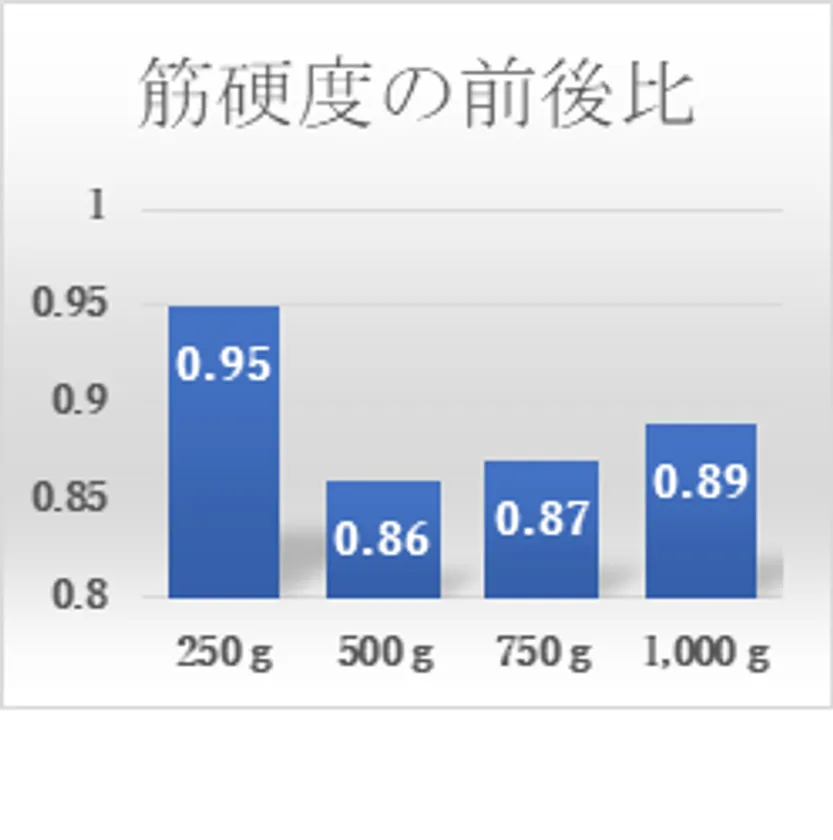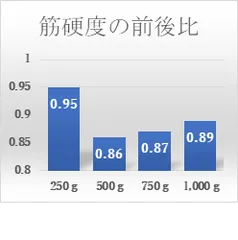Hopes to relieve "stiffness," a modern-day human affliction! Demonstrating the effectiveness of a new technique Demonstrating the effectiveness of a new technique, the "Relaxation and Elimination Technique," for relaxing the muscles of the lower back with little effort and in a short time!
Weak pressure of about 500g for 5 minutes significantly reduces lumbar muscle stiffness
一般社団法人日本健康機構
Japan Health Organization (Location: Chuo-ku, Tokyo; President: Takashi Sakado), in a joint research with the Department of Physical Therapy, Faculty of Health and Medical Care, Tokyo International University and the Rehabilitation Section of Musashidai Hospital, has revealed that applying a very weak force (approximately 500 to 750g) to the muscles of the lower back for about five minutes significantly reduces muscle stiffness (muscle hardness). This technique is called the "relaxing and dissipating method. This technique is called "Kan-sho-ho," and it has been scientifically proven that it can effectively relieve muscle tension even with a short, low-impact treatment. Furthermore, it has been confirmed that this effect can be obtained regardless of the gender, BMI (body mass index), or muscle stiffness of the person receiving the treatment, showing that this is a highly reproducible and effective method for anyone. This method has already been patented in the U.S. and is reported to be a safe therapy with few side effects.
[Key points of the research results
The weak force of about 500-750g and the small contact area of 1-2cm in diameter significantly reduce the stiffness of the lumbar muscles, even after only 5 minutes of treatment.
It has been scientifically proven that the technique "Loosen and Erase Method" can relieve muscle tension even in a short time and with a low load.
The effects are stable regardless of gender, body mass index (BMI), or muscle stiffness prior to treatment, and are highly reproducible and effective for everyone.
This method is patented in the U.S. and has a proven track record as a safe procedure with minimal side effects.

Muscle Hardness Before and After Treatment
The image "Muscle Hardness Before and After Treatment Ratio" illustrates the effect of the different pressing force verified in this study on the reduction of muscle hardness.
The vertical axis indicates the rate of decrease in muscle hardness (%) before and after the treatment, with larger values indicating softer muscles. 500 g and 750 g of pressure resulted in a higher rate of decrease in muscle hardness than the other conditions, indicating that the muscles softened significantly (* mark indicates a statistically significant difference compared to 250 g).
This result confirms that the most effective pressure is about 500-750 g in the Laxative Method.
[Background and Significance
Chronic pain, such as back pain and stiff shoulders, is a familiar health problem for many people today. Although excessive muscle tension (stiffness) is believed to be one of the causes of such pain, there have been limited treatment methods to effectively relieve muscle tension. It has been generally recognized that to relieve muscle tension through massage or stretching requires a certain degree of strength and a long period of time. However, the muscle-relaxing effects of the Relaxation Technique found in this study indicate the possibility of achieving the same or better results with very little force and in only a few minutes. This is a groundbreaking discovery that is easy to incorporate into today's busy society and offers a new approach with immediate results for patients suffering from chronic pain.
Furthermore, the effectiveness of this technique is not affected by gender or physique, making it applicable to a wide range of people, both men and women, young and old, and is not easily affected by differences in the skills of individual practitioners. This high reproducibility, which enables stable results no matter who performs the procedure, is a major advantage when introducing the method to rehabilitation settings and home care. In fact, since its development by Takashi Sakado (current president of the Japan Health Organization) in 2007, more than 17,000 practitioners and patients who have received training in the technique have practiced it, and many have reported improvements such as "pain and discomfort have disappeared. Now that scientific evidence has been added, it is expected to be used in more and more medical and health fields in the future.
The Laxative Method is a technique that does not harm the body, does not rely on drugs, and has been confirmed to be safe, with no serious side effects observed. The fact that it does not apply strong force to the musculature is also a major advantage, making it safe for the elderly and pain-sensitive people to undergo. The expansion of this safe and simple treatment method is expected to increase the number of care options for chronic back pain and stiff shoulders, and to contribute to improving the quality of life of patients.
Comment from the developer
Takashi Sakado, President and Physiologist of the Japan Health Organization, who led this research, said, "Traditionally, the use of a stiffness-relieving treatment has been used to relieve stiffness in the muscles.
"Conventionally, it has been common knowledge that strong force and a long time are required to relieve muscle stiffness. However, it is significant that we were able to scientifically prove that muscles can be loosened with only a little force. We are confident that this highly reproducible method, which is effective regardless of gender or body type, will help improve the health of many people suffering from back pain and stiff shoulders. We are committed to further clinical application and dissemination of this technique and hope to provide safe and effective pain care to a wider audience."
Information on this research
The results of this research have been published as an article in the journal of the Japanese Society of Fundamental Physical Therapy (online advance version at https://www.jstage.jst.go.jp/article/jjptf/advpub/0/advpub_JJPTF_2023-17/_article/-char/ja The results of this research have been published as an article in the journal of the Japanese Association for Basic Physical Therapy (online advance publication version at ). Title: "Influence of the Laxative Technique on Muscle Tone in the Lumbar Region" (Basic Physiotherapy/Early Release, Article ID: JJPTF_2023-17). This paper reports detailed data and statistical analysis results on the muscle relaxation effects of the Laxative Method, and presents the above conclusions.
[Company Profile
Organization: Japan Health Organization
Location: 1-14-5 Nihonbashi, Chuo-ku, Tokyo 103-0027, Japan
Representative: Takashi Sakado, Representative Director
Establishment: June 2, 2011
URL : https://www.jho.or.jp/
Activities: Research, investigation, dissemination, and education related to muscle relaxation/elimination techniques, and training of technicians
- Category:
- Technology & Development

